Pregnancy is an exciting time for expectant mothers, and as they approach their due date, they may start to look for ways to naturally induce labor. Some women have heard that getting a pedicure can help jumpstart labor, but is there any truth to this claim? In this article, we will explore how long after pedicure did labor start and the role that pedicures may play in this process.
Understanding the Concept of Inducing Labor
Inducing labor refers to the process of starting labor artificially before it begins naturally. This can be done for various reasons, such as if the mother is overdue, if there are concerns about the baby’s health, or if the mother has a medical condition that requires early delivery. There are several methods for inducing labor, including medications, breaking the water, and physical methods such as nipple stimulation or walking.
The Role of Pedicures in Inducing Labor
While there is no scientific evidence to support the claim that pedicures can induce labor, some women believe that the pressure points on the feet that are targeted during a pedicure can stimulate contractions. However, it is important to note that there is no guarantee that a pedicure will start labor, and there are potential risks associated with getting a pedicure during pregnancy. Pregnant women should always consult with their healthcare provider before trying any methods to induce labor.
Key Takeaways
- Inducing labor refers to starting labor artificially before it begins naturally.
- There is no scientific evidence to support the claim that pedicures can induce labor.
- Pregnant women should always consult with their healthcare provider before trying any methods to induce labor.
Understanding the Concept of Inducing Labor
Inducing labor is the process of starting labor artificially. This can be done for various reasons, such as when the pregnancy has gone beyond the full-term pregnancy or when the baby is not growing well in the uterus. Inducing labor can also be done when the mother has medical conditions that require the baby to be delivered earlier than expected.
During pregnancy, the uterus contracts regularly to help prepare for the birthing process. These contractions can be felt as mild cramps or discomfort in the lower abdomen. However, in some cases, the uterus may not contract enough to start the labor process. Inducing labor can help stimulate the uterus to contract and start the labor process.
The gestation period for humans is typically around 40 weeks. However, some women may go into labor earlier or later than expected. If labor does not start on its own, inducing labor may be necessary to avoid any complications that may arise from a prolonged pregnancy.
There are several methods for inducing labor, including medications, artificial rupture of the membranes, and mechanical methods. These methods work by stimulating the uterus to contract and start the birthing process.
It is important to note that inducing labor can be associated with risks, such as increased risk of cesarean delivery, fetal distress, and uterine rupture. Therefore, it is important to discuss the risks and benefits of inducing labor with a healthcare provider before making a decision.
In conclusion, inducing labor is a medical intervention that can be done for various reasons. It is important to understand the risks and benefits associated with inducing labor and to discuss them with a healthcare provider before making a decision.
The Role of Pedicures in Inducing Labor
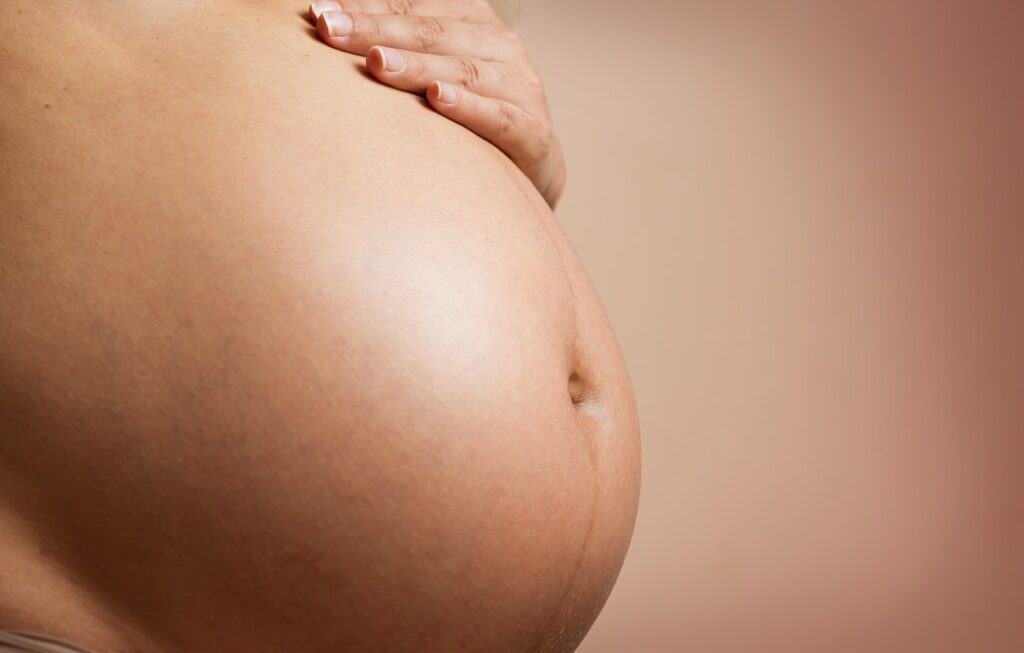
There is a common belief that pedicures and foot massages can help induce labor. However, the scientific evidence supporting this claim is limited. While some studies suggest that certain pressure points on the feet may stimulate contractions, more research is needed to confirm these findings.
Pedicures and foot massages can provide relaxation and therapy, which can be beneficial during pregnancy. Reflexology, a type of massage that focuses on pressure points on the feet, may also provide some relief from pregnancy-related symptoms such as swelling and back pain.
It is important to note that pedicures and foot massages should only be performed by a trained pedicurist or reflexologist who is familiar with the specific needs of pregnant women. Pressure points on the feet that are believed to induce labor should be avoided until the end of pregnancy when labor is desired.
In summary, while there is some anecdotal evidence suggesting that pedicures and foot massages may help induce labor, more research is needed to confirm these claims. However, pedicures and foot massages can provide relaxation and therapy during pregnancy, and reflexology may offer relief from pregnancy-related symptoms. It is important to seek out a trained professional and avoid pressure points that are believed to induce labor until the end of pregnancy.
Safety Concerns and Precautions for Pregnant Women at the Salon
Pregnant women need to take extra precautions when visiting a salon for a pedicure or manicure. Here are some safety concerns and precautions that pregnant women should keep in mind to ensure a safe and healthy experience.
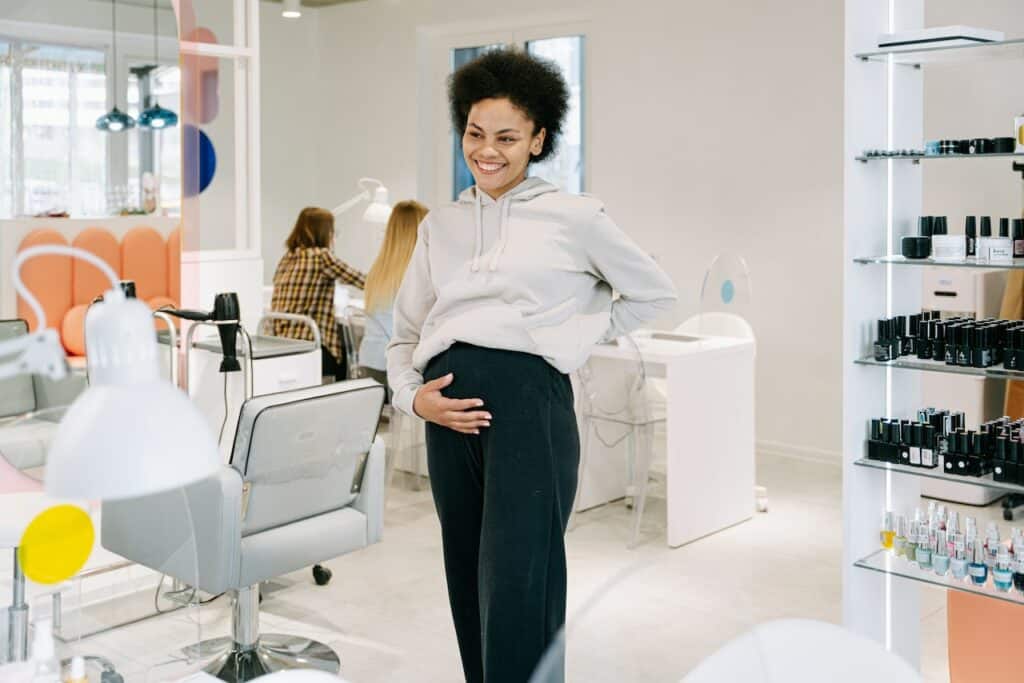
Hygiene and Sterilization
It is important to make sure that the salon you visit maintains proper hygiene and sterilization practices. The tools used for pedicures and manicures should be sterilized after each use to prevent the spread of infections. Nail files, clippers, and other tools should be sanitized in an autoclave or a chemical sterilizer.
Chemical Exposure
Pregnant women should avoid exposure to strong chemical smells and fumes. If the salon has poor ventilation, it can lead to respiratory problems. Pregnant women should choose a well-ventilated salon to avoid inhaling harmful chemicals. Nail polish and other products used in the salon should be safe for pregnant women.
Swollen Feet and Ankles
Pregnant women often experience swollen feet and ankles, which can make it difficult to sit in a pedicure chair for an extended period of time. It is important to take breaks and stretch your legs during the pedicure to avoid discomfort and swelling.
Healthcare Provider
Pregnant women should consult their healthcare provider before visiting a salon for a pedicure or manicure. Some women may have conditions that require special precautions, such as gestational diabetes or high blood pressure. Your healthcare provider can advise you on what is safe for you and your baby.
Nail Technician
It is important to choose a nail technician who is knowledgeable about the needs of pregnant women. The technician should be trained in proper hygiene and sterilization practices and should use sterile instruments for each client. If you have any concerns, do not hesitate to ask the technician about their practices.
By following these safety concerns and precautions, pregnant women can enjoy a relaxing and safe pedicure or manicure experience at the salon.
Scientific Evidence and Expert Opinions
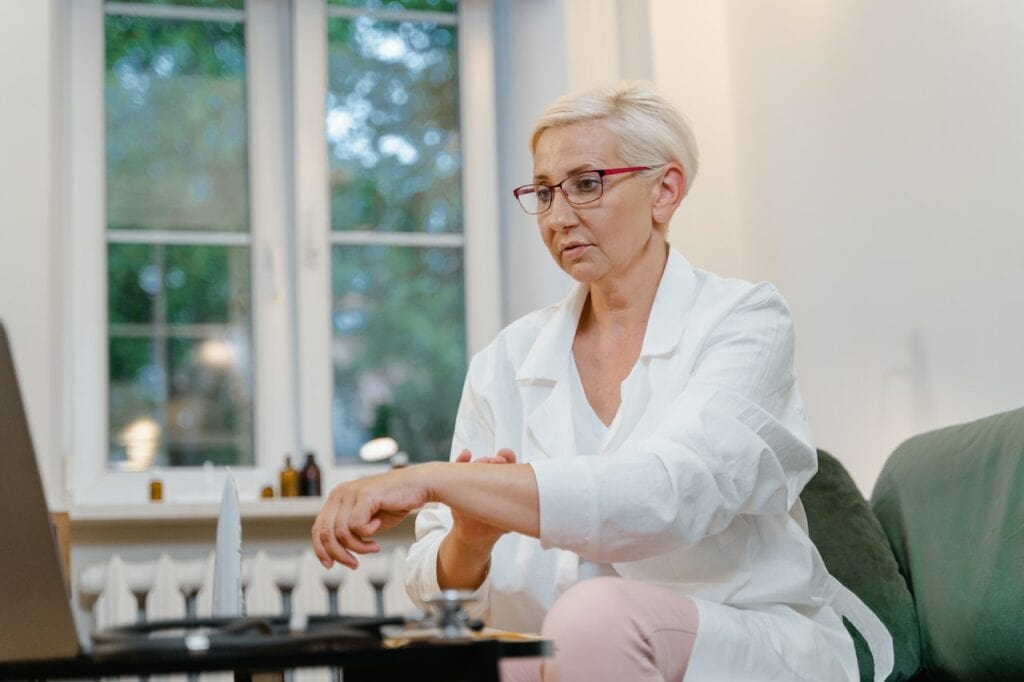
There is no scientific proof that pedicures can induce labor. However, there is some anecdotal evidence that suggests that stimulation of the feet may help to trigger contractions.
Doctors and experts advise expecting mothers to avoid getting pedicures in the last few weeks of their pregnancy. This is because there are pressure points on the feet that can stimulate the uterus and potentially induce labor.
While there is no concrete research that proves that pedicures can induce labor, some mothers have reported that they went into labor shortly after getting a pedicure. However, there are also many mothers who have received pedicures and did not go into labor.
It is important to note that there are many factors that can contribute to the onset of labor, and getting a pedicure is unlikely to be the sole cause. Mothers should always consult with their doctor before trying any methods to induce labor.
In summary, while there is no scientific evidence to support the claim that pedicures can induce labor, there is some anecdotal evidence and expert opinions that suggest that stimulation of the feet may help to trigger contractions. However, mothers should always consult with their doctor before trying any methods to induce labor.
Alternative Methods to Induce Labor
While there is no guaranteed way to induce labor, there are some alternative methods that some women have found helpful. These methods can be used as a complement to medical interventions or as a way to try and naturally encourage labor to start.
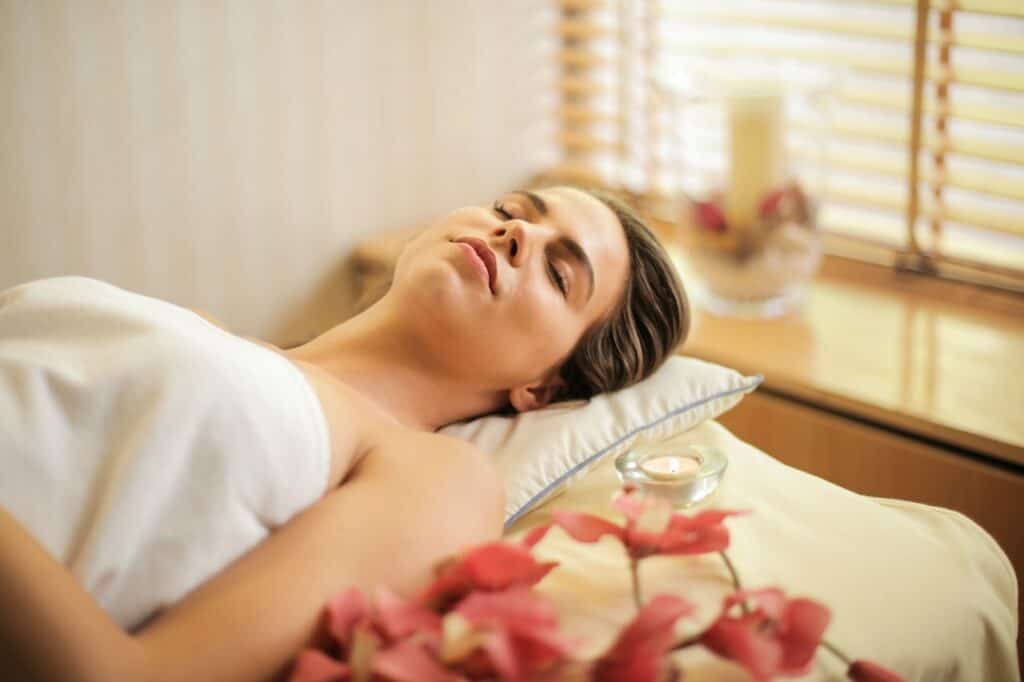
Massage
Massage can be a relaxing way to prepare for labor and potentially encourage it to start. Prenatal massages can help to relieve tension and stress in the body, which may help to prepare the body for labor. Some women also find that pressure point massages can be helpful in inducing labor.
Prenatal Classes
Prenatal classes can be a great way to learn more about labor and delivery, as well as to connect with other expectant mothers. Some classes may also offer exercises or techniques to help prepare the body for labor and potentially encourage it to start.
Sex
Sexual intercourse can help to stimulate contractions and potentially induce labor. This is because semen contains prostaglandins, which can help to soften and thin the cervix. However, it is important to talk to a healthcare provider before trying this method, as it may not be safe for everyone.
Acupuncture
Acupuncture involves the use of thin needles to stimulate specific points on the body. Some women have found that acupuncture can be helpful in inducing labor. However, it is important to only receive acupuncture from a licensed practitioner who has experience working with pregnant women.
Nausea
Nausea can be a sign that labor is approaching, as the body prepares for delivery. Some women have found that eating spicy foods or drinking castor oil can help to induce labor by causing nausea and potentially stimulating contractions. However, it is important to talk to a healthcare provider before trying these methods.
Warm Baths
Taking a warm bath can help to relax the body and potentially encourage labor to start. Some women also find that adding essential oils or Epsom salts to the bath can be helpful in inducing labor.
Thumb
Pressing on the webbing between the thumb and index finger can potentially stimulate contractions and induce labor. However, it is important to talk to a healthcare provider before trying this method, as it may not be safe for everyone.
Overall, it is important to remember that every woman’s body is different and what works for one woman may not work for another. It is important to talk to a healthcare provider before trying any alternative methods to induce labor.
Additional Considerations for Pregnant Women
Pregnancy can be a wonderful and exciting time, but it also requires extra care and attention. This is especially true when it comes to beauty treatments like pedicures. While getting a pedicure can be a great way to relax and pamper yourself during pregnancy, there are some additional considerations that pregnant women should keep in mind.
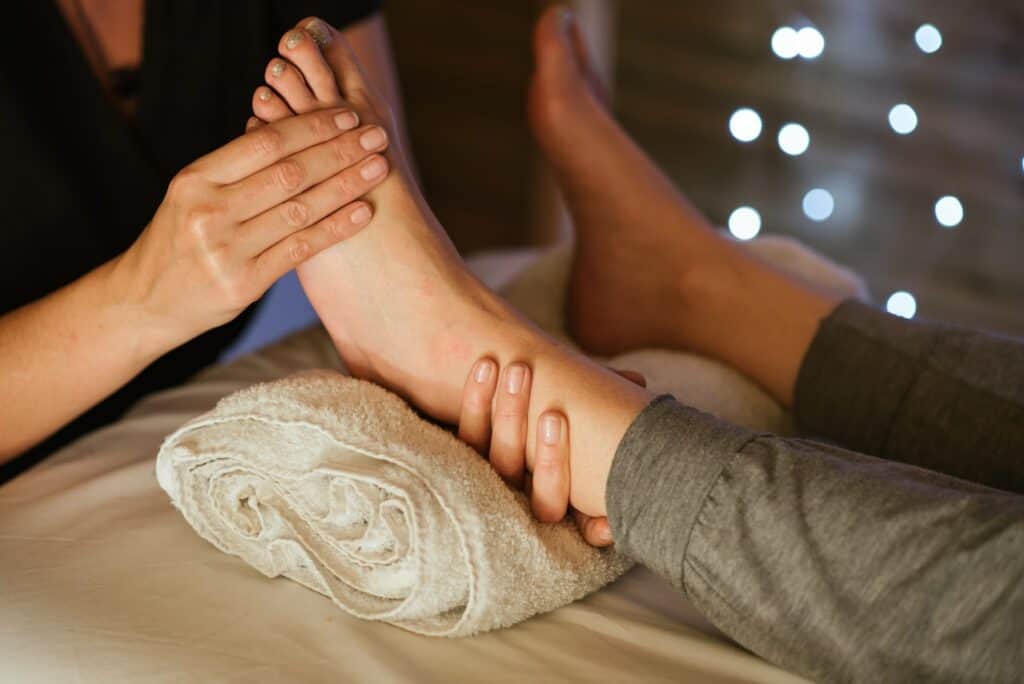
Safe Beauty Treatments
It’s important to ensure that any beauty treatments you receive during pregnancy are safe for both you and your baby. This includes pedicures. Pregnant women should avoid any treatments that involve harsh chemicals or toxins, such as acrylic nails or chemical peels. Stick to natural and organic products whenever possible.
Health Inspection Scores
When choosing a salon for your pedicure, it’s important to look for a salon with a high health inspection score. This can help ensure that the salon is clean and hygienic, which is especially important during pregnancy when your immune system is weaker than usual.
Polish and Fungus
Pregnant women should also be careful when it comes to nail polish and fungus. Some nail polishes contain harmful chemicals like formaldehyde, toluene, and phthalates. Look for polishes that are labeled “3-free” or “5-free” to avoid these toxins. Additionally, pregnant women are more susceptible to fungal infections, so it’s important to make sure that the salon you choose uses clean and sterilized tools.
Nail Changes
Pregnancy can cause changes in your nails, such as brittleness, ridges, and discoloration. While these changes are usually temporary, they can be frustrating. Getting regular pedicures can help keep your nails healthy and looking their best.
Energy Field
Finally, some pregnant women may be concerned about the impact of a pedicure on their energy field. While there is no scientific evidence to support this concern, some women may prefer to avoid pedicures during the first trimester when the fetus is still developing.
In conclusion, getting a pedicure during pregnancy can be a safe and enjoyable way to relax and pamper yourself. Just be sure to take the necessary precautions and choose a salon that is clean and hygienic.
Frequently Asked Questions
How soon after a pedicure can labor start?
There is no definitive answer to this question. While there is no scientific evidence to suggest that pedicures can induce labor, some women have reported going into labor shortly after getting a pedicure. However, it is important to note that there are many factors that can contribute to the onset of labor, and it is unlikely that a pedicure alone would be the cause.
What are the signs that labor is near after a pedicure?
Some signs that labor may be near after a pedicure include contractions that are regular and increasing in intensity, a feeling of pressure in the pelvic area, and a sudden burst of energy. However, it is important to note that these symptoms can also be indicative of other conditions, and it is always best to consult with a healthcare provider if you are experiencing any unusual symptoms.
Can a foot massage induce labor?
While there is no scientific evidence to suggest that foot massages can induce labor, some women have reported going into labor shortly after receiving a foot massage. However, it is important to note that there are many factors that can contribute to the onset of labor, and it is unlikely that a foot massage alone would be the cause.
Is it safe to get a pedicure at 38 weeks pregnant?
In general, it is safe to get a pedicure at 38 weeks pregnant. However, it is important to ensure that the salon you are visiting uses safe and hygienic practices, and that you are comfortable throughout the process. It is also important to avoid any treatments that may be harmful to you or your baby, such as chemical treatments or hot wax.
What are some natural ways to induce labor?
Some natural ways to induce labor include walking, nipple stimulation, and having sex. However, it is important to note that these methods are not guaranteed to induce labor, and it is always best to consult with a healthcare provider before trying any natural induction methods.
What are some pressure points that can help induce labor?
Some pressure points that can help induce labor include the webbing between the thumb and index finger, the ankle bone, and the lower back. However, it is important to note that these pressure points should only be stimulated under the guidance of a trained healthcare provider, as they can be dangerous if stimulated incorrectly.

Iesha is a loving mother of 2 beautiful children. She’s an active parent who enjoys indoor and outdoor adventures with her family. Her mission is to share practical and realistic parenting advice to help the parenting community becoming stronger.
